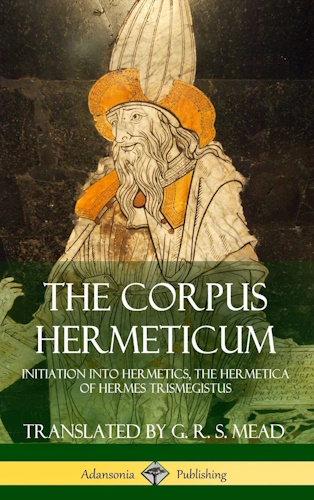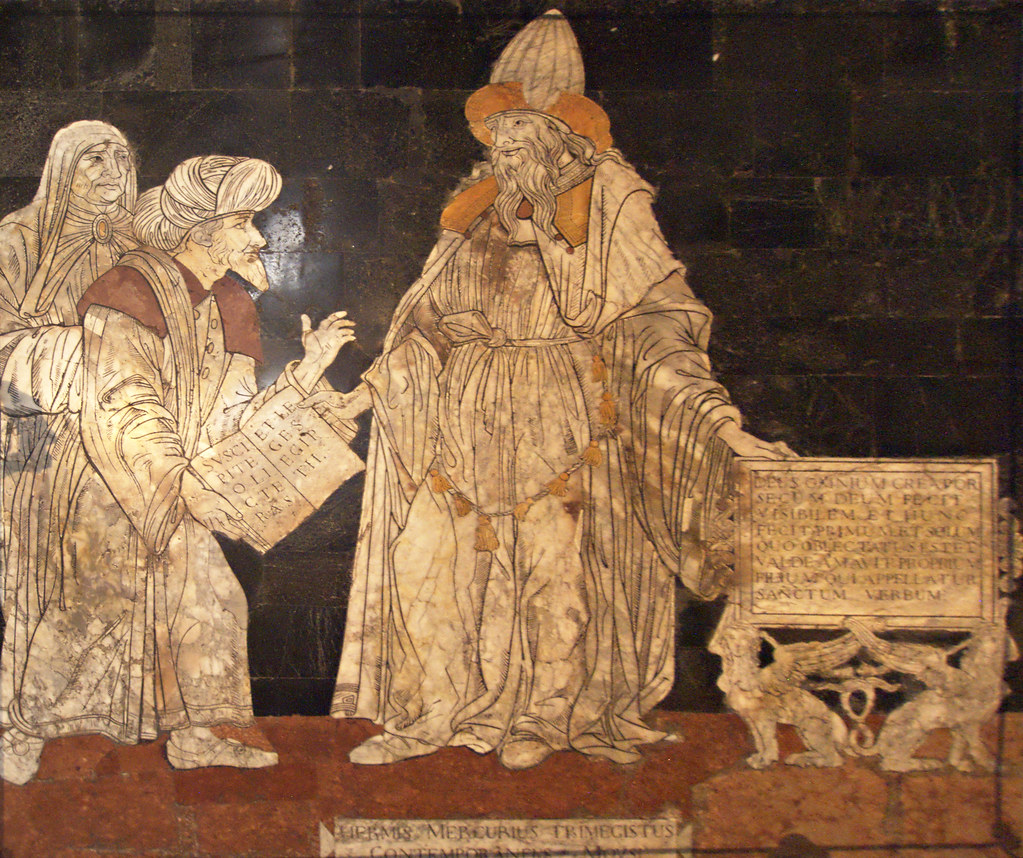
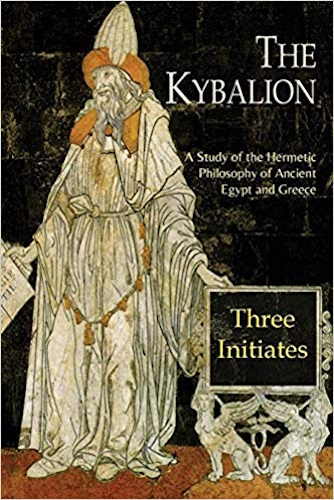

![Thrice-Greatest Hermes; Studies in Hellenistic Theosophy and Gnosis [Three Volumes in One] Thrice-Greatest Hermes; Studies in Hellenistic Theosophy and Gnosis [Three Volumes in One]](http://realityroars.com/images/affiliate-creative/thrice-greatest-hermes--studies-in-hellenistic-theosophy-and-gnosis.jpg)

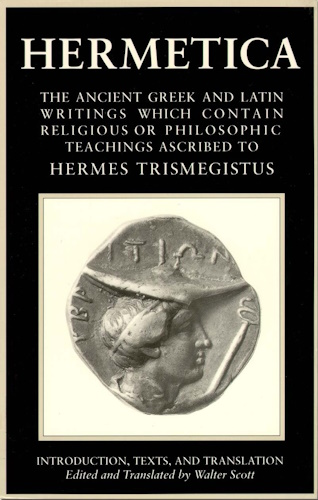



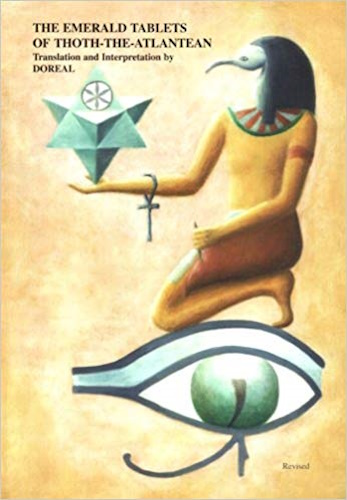

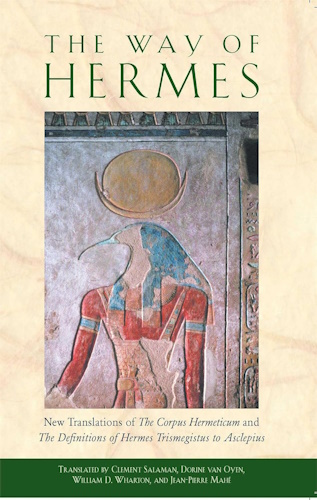

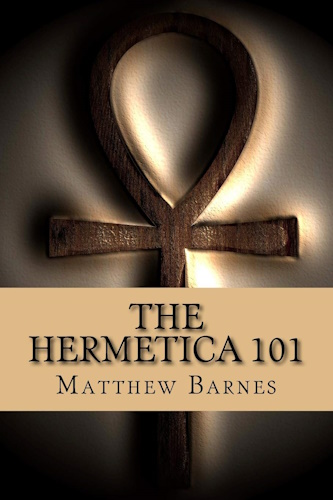

![]()
![]()
XIV. [A Letter] of Thrice-Greatest Hermes to Asclepius
Unto Asclepius Good Health of Soul!
1. Since in thy absence my son Tat desired to learn the nature of the things that are, and would not let me hold it over, as [natural to] a younger son fresh come to gnosis of the [teachings] on each single point,—I was compelled to tell [him] more, in order that the contemplation [of them] might be the easier for him to follow.
I would, then, choosing out the chiefest heads of what was said, write them in brief to thee, explaining them more mysticly, as unto one of greater age and one well versed in Nature.
2. If all things manifest have been and are being made, and made things are not made by their own selves but by another; [if] made things are the many,—nay more, are all things manifest and all things different and not alike; and things that are being made are being made by other [than themselves];—there is some one who makes these things; and He cannot be made, but is more ancient than the things that can.
For things that can be made, I say, are made by other [than themselves]; but of the things that owe their being to their being made, it is impossible that anything should be more ancient than them all, save only That which is not able to be made.
3. So He is both Supreme, and One, and Only, the truly wise in all, as having naught more ancient [than Himself].
For He doth rule o'er both the number, size and difference of things that are being made, and o'er the continuity of their making [too].
Again, things makeable are seeable; but He cannot be seen.
For for this cause He maketh,—that He may not be able to be seen.
He, therefore, ever maketh; and therefore can He ne'er be seen.
To comprehend Him thus is meet; and comprehending, [it is meet] to marvel; and marvelling, to count oneself as blessed, as having learnt to know one's Sire.
4. For what is sweeter than one's own true Sire? Who, then, is He; and how shall we learn how to know Him?
Is it not right to dedicate to Him alone the name of God, or that of Maker, or of Father, or rather [all] the three;—God for His Power, and Maker for His Energy, and Father for His Good?
Now Power doth differ from the things which are being made; while Energy consisteth in all things being made.
Wherefore we ought to put away verbosity and foolish talk, and understand these two—the made and Maker. For that of them there is no middle [term]; there is no third.
5. Wherefore in all that thou conceivest, in all thou nearest, these two recall to mind; and think all things are they, reckoning as doubtful naught, nor of the things above, nor of the things below, neither of things divine, nor things that suffer change or things that are in obscuration.
For all things are [these] twain, Maker and made, and 'tis impossible that one should be without the other; for neither is it possible that "Maker" should exist without the "made," for each of them is one and the same thing.
Wherefore 'tis no more possible for one from other to be parted, than self from self.
6. Now if the Maker is naught else but That which makes, Alone, Simple, Uncompound, it needs must do this [making] to Itself,—to Which its Maker's making is "its being made."
And as to all that's being made,—it cannot be [so made] by being made by its own self; but it must needs be made by being made by other. Without the "Maker" "made" is neither made nor is; for that the one without the other doth lose its proper nature by deprivation of that other.
If, then, all things have been admitted to be two,—the "that which is being made" and "that which makes,"—[all then] are one in union of these,—the "that which leadeth" and the "that which followeth."
The making God is "that which leadeth"; the "that which is being made," whatever it be, the "that which followeth."
7. And do not thou be chary of things made because of their variety, from fear of attribution of a low estate and lack of glory unto God.
For that His Glory's one,—to make all things; and this is as it were God's Body, the making [of them].
But by the Maker's self naught is there thought or bad or base.
These things are passions which accompany the making process, as rust doth brass and filth doth body; but neither doth the brass-smith make the rust, nor the begetters of the body filth, nor God [make] evil.
It is continuance in the state of being made that makes them lose, as though it were, their bloom; and 'tis because of this God hath made change, as though it were the making clean of genesis.
8. Is it, then, possible for one and the same painter man to make both heaven, and gods, and earth, and sea, and men, and all the animals, and lifeless things, and trees, and yet impossible for God to make all things?
What monstrous lack of understanding; what want of knowledge as to God!
For such the strangest lot of all do suffer; for though they say they worship piously and sing the praise of God, yet by their not ascribing unto Him the making of all things, they know not God; and, added unto this not-knowing, they're guilty even of the worst impiety to Him—passions to Him attributing, or arrogance, or impotency.
For if He doth not make all things, from arrogance He doth not make, or not being able,—which is impiety [to think].
9. One Passion hath God only—Good; and He who's Good, is neither arrogant nor impotent.
For this is God—the Good, which hath all power of making all.
And all that can be made is made by God,—that is, by [Him who is] the Good and who can make all things.
But would'st thou learn how He doth make, and how things made are made, thou may'st do so.
10. Behold a very fair and most resemblant image—a husbandman casting the seed into the ground; here wheat, there barley, and there [again] some other of the seeds!
Behold one and the same man planting the vine, the apple, and [all] other trees!
In just the selfsame way doth God sow Immortality in Heaven, and Change on Earth, and Life and Motion in the universe.
These are not many, but few and easy to be numbered; for four in all are they,—and God Himself and Genesis, in whom are all that are.


![Thrice-Greatest Hermes; Studies in Hellenistic Theosophy and Gnosis [Three Volumes in One] Thrice-Greatest Hermes; Studies in Hellenistic Theosophy and Gnosis [Three Volumes in One]](http://realityroars.com/images/affiliate-creative/thrice-greatest-hermes--studies-in-hellenistic-theosophy-and-gnosis.jpg)











-
Urantia Book, 44:0.11 - The Celestial Artisans
Never in your long ascendancy will you lose the power to recognize your associates of former existences. Always, as you ascend inward in the scale of life, will you retain the ability to recognize and fraternize with the fellow beings of your previous and lower levels of experience. Each new translation or resurrection will add one more group of spirit beings to your vision range without in the least depriving you of the ability to recognize your friends and fellows of former estates.
-
Princess Bride 1987 Wallace Shawn (Vizzini) and Mandy Patinkin (Inigo Montoya)
Vizzini: HE DIDN'T FALL? INCONCEIVABLE.
Inigo Montoya: You keep using that word. I do not think it means what you think it means. -
Urantia Book, 117:4.14 - The Finite God
And here is mystery: The more closely man approaches God through love, the greater the reality -- actuality -- of that man. The more man withdraws from God, the more nearly he approaches nonreality -- cessation of existence. When man consecrates his will to the doing of the Father's will, when man gives God all that he has, then does God make that man more than he is.
-
Urantia Book, 167:7.4 - The Talk About Angels
"And do you not remember that I said to you once before that, if you had your spiritual eyes anointed, you would then see the heavens opened and behold the angels of God ascending and descending? It is by the ministry of the angels that one world may be kept in touch with other worlds, for have I not repeatedly told you that I have other sheep not of this fold?"
-
Urantia Book, Foreword - 0:12.12 - The Trinities
But we know that there dwells within the human mind a fragment of God, and that there sojourns with the human soul the Spirit of Truth; and we further know that these spirit forces conspire to enable material man to grasp the reality of spiritual values and to comprehend the philosophy of universe meanings. But even more certainly we know that these spirits of the Divine Presence are able to assist man in the spiritual appropriation of all truth contributory to the enhancement of the ever-progressing reality of personal religious experience—God-consciousness.
-
Urantia Book, 1:4.3 - The Mystery Of God
When you are through down here, when your course has been run in temporary form on earth, when your trial trip in the flesh is finished, when the dust that composes the mortal tabernacle "returns to the earth whence it came"; then, it is revealed, the indwelling "Spirit shall return to God who gave it." There sojourns within each moral being of this planet a fragment of God, a part and parcel of divinity. It is not yet yours by right of possession, but it is designedly intended to be one with you if you survive the mortal existence.
-
Urantia Book, 1:4.1 - The Mystery Of God
And the greatest of all the unfathomable mysteries of God is the phenomenon of the divine indwelling of mortal minds. The manner in which the Universal Father sojourns with the creatures of time is the most profound of all universe mysteries; the divine presence in the mind of man is the mystery of mysteries.
-
Urantia Book, 1:4.6 - The Mystery Of God
To every spirit being and to every mortal creature in every sphere and on every world of the universe of universes, the Universal Father reveals all of his gracious and divine self that can be discerned or comprehended by such spirit beings and by such mortal creatures. God is no respecter of persons, either spiritual or material. The divine presence which any child of the universe enjoys at any given moment is limited only by the capacity of such a creature to receive and to discern the spirit actualities of the supermaterial world.
-
Urantia Book, 11:0.1 - The Eternal Isle Of Paradise
Paradise is the eternal center of the universe of universes and the abiding place of the Universal Father, the Eternal Son, the Infinite Spirit, and their divine co-ordinates and associates. This central Isle is the most gigantic organized body of cosmic reality in all the master universe. Paradise is a material sphere as well as a spiritual abode. All of the intelligent creation of the Universal Father is domiciled on material abodes; hence must the absolute controlling center also be material, literal. And again it should be reiterated that spirit things and spiritual beings are real.
-
Urantia Book, 50:6.4 - Planetary Culture
Culture presupposes quality of mind; culture cannot be enhanced unless mind is elevated. Superior intellect will seek a noble culture and find some way to attain such a goal. Inferior minds will spurn the highest culture even when presented to them ready-made.
-
Urantia Book, 54:1.6 - True And False Liberty
True liberty is the associate of genuine self-respect; false liberty is the consort of self-admiration. True liberty is the fruit of self-control; false liberty, the assumption of self-assertion. Self-control leads to altruistic service; self-admiration tends towards the exploitation of others for the selfish aggrandizement of such a mistaken individual as is willing to sacrifice righteous attainment for the sake of possessing unjust power over his fellow beings.
-
Urantia Book, 54:1.9 - True And False Liberty
How dare the self-willed creature encroach upon the rights of his fellows in the name of personal liberty when the Supreme Rulers of the universe stand back in merciful respect for these prerogatives of will and potentials of personality! No being, in the exercise of his supposed personal liberty, has a right to deprive any other being of those privileges of existence conferred by the Creators and duly respected by all their loyal associates, subordinates, and subjects.
-
Urantia Book, 54:1.8 - True And False Liberty
There is no error greater than that species of self-deception which leads intelligent beings to crave the exercise of power over other beings for the purpose of depriving these persons of their natural liberties. The golden rule of human fairness cries out against all such fraud, unfairness, selfishness, and unrighteousness.

